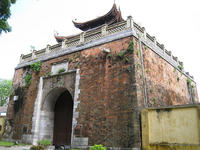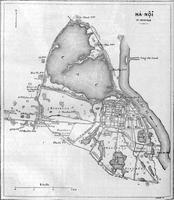You are in: Asia -> Vietnam -> Central Sector of th... , and traditional search or Image Gallery will yield results of this site only
Central Sector of the Imperial Citadel of Thang Long – Hanoi
| Site number: | 1328 |
|
| Type of site: | Cultural | |
| Date: | 11 century | |
| Date of Inscription: | 2010 | |
| Location: | Asia, Vietnam, Hanoi | |
Up to 75 images are shown here. Click on each for more details or on Image Gallery for more images.
| Description: | The Imperial Citadel of Thang-Long was constructed by the Ly Viet Dynasty in the 11th century on the ruins of a 7th century Chinese fortress, on land drained and reclaimed from Hanoi’s Red River Delta. It marked the independence of the Dai Viet, and remained the center of regional political power for almost 13 thirteen centuries. The Imperial Citadel buildings and the remains in the 18 Hoang Dieu Archaeological Site were culturally influenced by China in the north and the ancient Kingdom of Champa in the south, and are representative of the South-East Asian culture of the lower Red River Valley. It is the 900th World Heritage site to be inscribed by UNESCO. --WHMNet paraphrase from the description at WHC Site, where additional information is available. | |
| The central old citadel of Hanoi was the former residence of Vietnamese monarchs dating back to Đại Việt, when the city was known as Thăng Long. The citadel was constructed earliest by the Ly dynasty in 1010 and remained the seat of the Vietnamese court until 1810, when Huế became the capital city. The royal palaces and other various structures were largely destroyed by the colonial French in the late 19th century. Some structures remain such as Doan Mon gate and the Flag Tower of Hanoi, as well as the steps of Kinh Thiên Palace and the Hậu Lâu (Princess' Palace). The Vietnamese military command under General Giap, had its headquarters in the citadel in the building known as D67. An underground tunnel enabled the military to flee to other parts in case of a raid. Construction work for the National Assembly building in 2003 uncovered large remains of the citadel dating back to Thăng Long. Some of the remains are now exhibited in the Vietnamese History Museum. Where the planned new National Assembly building should not be located is still open. Starting in 2000, some of the old French barracks and buildings have been destroyed to make place for a new museum within the citadel. In 2010 the citadel was inscribed on the UNESCO World Heritage List as "The Central Sector of the Imperial Citadel of Thang Long - Hanoi". --Wikipedia. Text is available under the Creative Commons Attribution-ShareAlike License. | ||
| Source: | http://whc.unesco.org/en/list/1328 | |
| Reference: | 1. UNESCO World Heritage Center (http://whc.unesco.org/en/list/1328). 2. Wikipedia. | |



























